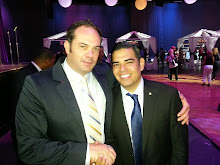"I was starting to think I had the World Cup jinx," Mitts said Sunday. "Luckily, everything does happen for a reason, so I find myself here at a World Cup after all of my hard work. To be able to be here, it really is a cliche but it's a dream come true for me."
The top-ranked United States opens group play Tuesday against North Korea.
Mitts has been an integral part of the U.S. squad the last seven years, starting all but 15 of the 111 games she's played in since 2004. She helped anchor the defense as the Americans won the gold medal at both the Athens Olympics and Beijing Games. In Beijing, the Americans posted three shutouts, including a 1-0 overtime victory over Brazil in the gold medal game.
But the World Cup is the premier event in soccer, and no elite player's career is truly complete without playing in at least one.
"This is our Super Bowl," Mitts said.
There was no question Mitts would have been part of the U.S. team in 2007. She had logged the second-most minutes of any U.S. player in 2006, and started the Americans' first seven games of 2007. But in a May 12 friendly against Canada, Mitts felt her left knee give and knew immediately that she'd blown the anterior cruciate ligament.
With the World Cup only four months away, there was no way Mitts could make it back in time.
"I wasn't crying from the pain, I was crying from the fact I knew I wasn't going to be able to be a part of that World Cup," she said. "Obviously it was very devastating, the timing of it all. But at the same time, it is what it is and nothing can be done about it."
Mitts worked as an analyst for ESPN during the World Cup, watching from the United States as the Americans were dismantled by Brazil in a 4-0 loss in the semifinals.
"It's difficult not to be out there with your teammates when you know how hard you've worked," she said. "The other thing is, when you see them struggling, obviously you want to be able to be there and help. Once again, nothing you can do about it, so you just try to help from afar."
Mitts returned for the Beijing Olympics, and was a model of durability until January. She helped the Philadelphia Freedom to the WPS championship game in September, then played every minute of three games during World Cup qualifying. When the U.S. was forced into a home-and-home playoff against Italy to earn a trip to Germany, Mitts started each game.
And when the Americans returned to China in January for the Four Nations tournament, Mitts was on the field for all 90 minutes of the opener, a 2-1 loss to Sweden.
The next morning, her right hamstring hurt so badly she couldn't lift her leg.
"I knew I still had time at that point," she said.
She threw herself into rehab, spending three and four hours each day in a hyperbaric chamber and getting electronic massage to speed blood flow and accelerate repair of the muscle. She did strengthening exercises and got her hips adjusted. Finally, in April, she was ready to go again and joined the U.S. team at its World Cup training camp.
Then, two days before the women faced fellow top seed Japan in an exhibition in Columbus, Ohio, Mitts felt that familiar tug in her hamstring during training.
"That's when I was kind of like, 'Gosh, now I'm really going to be pushing it here,' because I knew time kind of wasn't on my side," she said. "I just went back to what I'd done before with my rehab. Honestly, I attribute that dedication to the reason why I'm here."
When U.S. coach Pia Sundhage announced her World Cup roster, Mitts' name was on it.
"I was relieved more than anything," she said. "I had been so stressed out from January until I found out I made it. I was trying to have a really positive outlook but at the same time, in the back of your mind you're thinking, 'Oh my gosh, is this my last chance?' Everything happens for a reason, and I'm here."
As will be her husband, St. Louis Rams quarterback A.J. Feeley.
Feeley didn't get to see his wife play in the Olympics because they overlapped with training camp. But with the NFL lockout, Feeley has time on his hands and will make his very first trip overseas for the second and third games of group play. The U.S. plays Colombia on July 2 in Sinsheim and faces Sweden on July 6 in Wolfsburg.
Mitts likely won't start, and there's a chance she may not even get off the bench.
She'll be in uniform, though, and that's all that matters.
"I know that my situation is definitely a little bit different now based on my injury," she said. "I'm extremely happy to be here and if I'm called upon, I will be ready. And if that means I'm sitting on the bench, I will be supporting my teammates 100 percent.

No comments:
Post a Comment